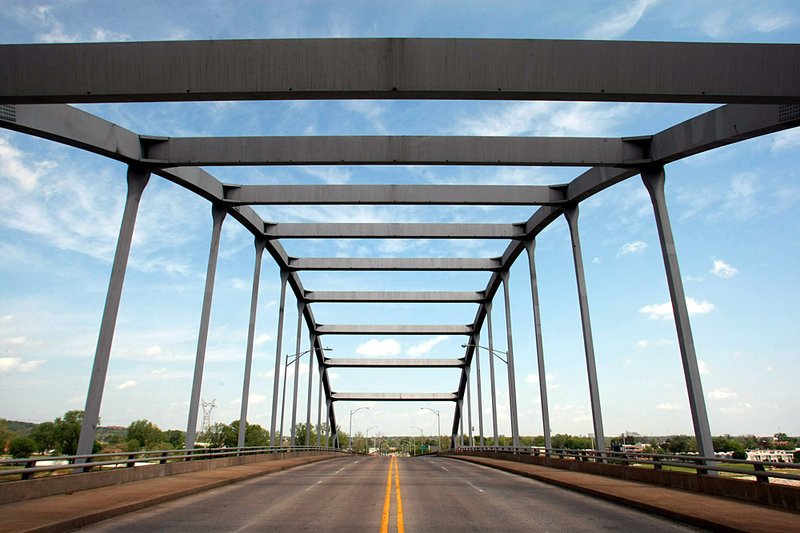LITTLE ROCK — The Arkansas Highway and Transportation Department will include local officials in early planning for a replacement for the Broadway Bridge, but not as soon as some would like, to build what they believe should be an iconic bridge to anchor central Arkansas.
The state Highway Commission is to pick an engineering firm Wednesday to design a new bridge across the Arkansas River between Little Rock and North Little Rock.
The department has estimated it will take $45 million in federal bridge-replacement money and state matching funds to begin construction of the bridge in 2013. Agency officials have cautioned thatthe figure is only a rough estimate, factoring in the average cost of a bridge of that size and the amount of money state highway officials project will be available at the time of construction.
Agency staff has shortlisted four firms from the 10 that originally expressed interest in designing the bridge. Those firms are:
Florence & Hutcheson Consulting Engineers, which entered a joint proposal with T.Y. Lin International, which is based in San Francisco.
Garver LLC, which submitted a joint proposal with HNTB, which is based in Kansas City, Mo.
Parsons Transportation Group.
LPA Group Transportation Consultants, which is a unit of the Michael Baker Corp.
Of the four, only Parsons doesn’t have an office in Little Rock or North Little Rock. It is based in Memphis.
When the commission likely accepts the staff recommendation on which firm should design the bridge, it is only the first step. At that point, department officials must negotiate a contract with the firm before design work can begin.
“One unknown is how long are those negotiations going to take,” said Randy Ort, a department spokesman. “We’ve got to finalize a contract with them, which is generally not a huge ordeal.”
Once a contract is in place, the department will schedule what is known as a “scoping” meeting, in which department staff members meet with local officials to discuss the functional aspects of the bridge, such as the number of traffic lanes and the location of bicycle lanes and sidewalks, as well as their connections to the ground and other features, Ort said.
Only then can the designing begin.
As part of the design process, the department will again meet with Little Rock and North Little Rock officials to present a preliminary design, based on the “scoping meeting,” and ask for input. Some question whether that is too late in the process to ensure a design that meets local expectations.
“I think the mayors and I would like to see that [input] sooner rather than later,” said Pulaski County Judge Buddy Villines, referring to Mayors Mark Stodola of Little Rock and Patrick Hays of North Little Rock.
But the engineering firm cannot design a bridge until it knows what features need to be included, Ort said.
“You don’t want to get hung up on what it looks like until you know what your bridge will be used for,” he said. “No one wants to be sold on the way something looks until you try to figure out how to make those [features] work.”
Department officials told local officials earlier this year that they concluded the condition of the nearly 90-year-old bridge made it too cost-prohibitive to be renovated and must be replaced. They also said land constraints in the area - the presence of Little Rock City Hall and the Robinson Center at the base of the south end of the bridge, among other things - require that the new bridge be built in the same place as the old one, which means the old bridge must be removed before construction can begin on the new one.
That means Broadway Bridge traffic, averaging 24,000 vehicles each day, will have to be diverted to the area’s four other Arkansas River crossings, with most of it likely using the Main Street Bridge and the Interstate 30 bridge. Those bridges average 12,000 and 120,000 vehicles a day, respectively.
Whichever firm is picked to design the bridge also will be responsible for the challenge of shifting the bridge traffic elsewhere during the construction.
“It’s still a little early” to be discussing how downtown traffic patterns will change during the construction, said Bill Henry, the Little Rock traffic engineer. The engineering firms have been calling for data to include as part of their proposals, Henry said.
“At this point in time, we don’t know what is needed,” he said.
Arkansas, Pages 7 on 04/11/2011
